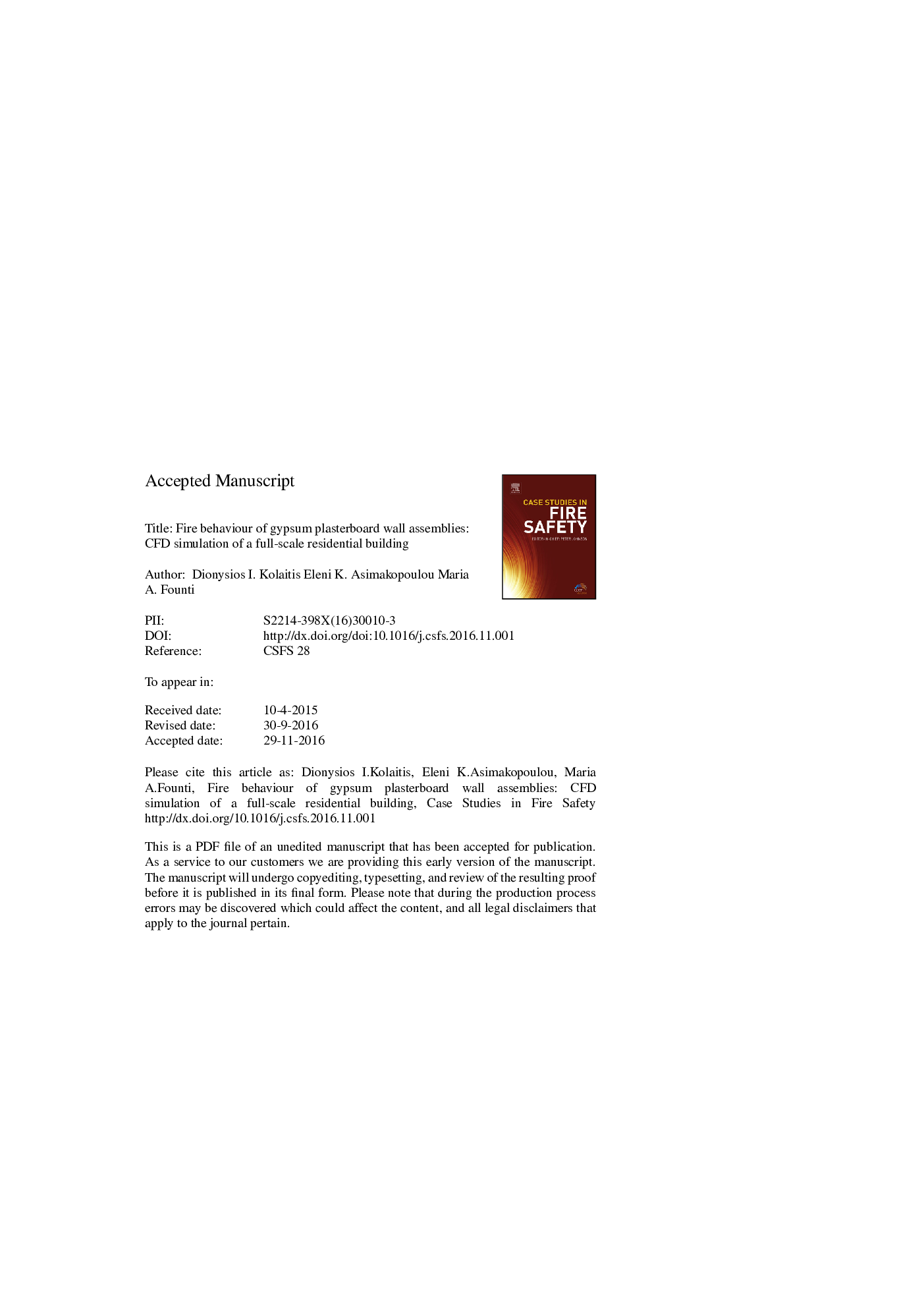| Article ID | Journal | Published Year | Pages | File Type |
|---|---|---|---|---|
| 6702007 | Case Studies in Fire Safety | 2017 | 28 Pages |
Abstract
Gypsum “dehydration” phenomena, occurring when gypsum plasterboard wall assemblies are exposed to a high temperature environment, result in water vapour production and subsequent dispersion in the fire compartment; these phenomena are often neglected in relevant Computational Fluid Dynamics (CFD) simulations. Aiming to investigate the impact of gypsum dehydration in full-scale CFD simulations of lightweight drywall buildings, the FDS code is used to simulate a two-storey residential building, exposed to a typical domestic fire scenario. The building employs a structural steel frame combined with gypsum plasterboard wall assemblies. Temperature-dependent thermo-physical properties are used for all construction materials. The effects of gypsum dehydration are assessed by using two alternative modelling approaches, an effective specific heat model and a solid reaction kinetics model; the obtained predictions are compared to a benchmark test case, where no such phenomena are modelled. The obtained results demonstrate that when the highly endothermic gypsum dehydration phenomena are simulated, lower overall heat release rates, gas and wall surface temperatures are predicted. In addition, the developed solid reaction kinetics model allows, for the first time, quantitative predictions of gypsum dehydration induced water vapour production and dispersion phenomena.
Related Topics
Physical Sciences and Engineering
Chemical Engineering
Chemical Health and Safety
Authors
Dionysios I. Kolaitis, Eleni K. Asimakopoulou, Maria A. Founti,
